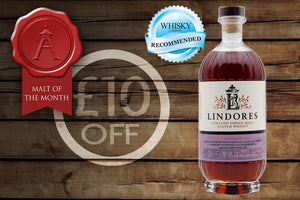
Inverleven
Inverleven is rarely seen as a single malt and as a distillery experienced a rather mysterious existence before closing in 1991. Inverleven has nothing to do with the Fife town...
Inverleven
Inverleven is rarely seen as a single malt and as a distillery experienced a rather mysterious existence before closing in 1991. Inverleven has nothing to do with the Fife town of Leven, being situated on the other side of Scotland. Rather its name comes from the nearby River Leven. Inverleven was situated within the huge Dumbarton grain distillery that was established in 1938 in the town of the same name. During the 1930’s the Canadian company was purchasing various whisky assets across Scotland including Glenburgie, Miltonduff and the blending firm George Ballantine & Sons.
The 15-acre site was formerly the McMillan shipyard and was a significant presence in the town. The concept from Hiram Walker was to establish a centre for its whisky operations in Scotland. This would offer the facilities to create and blend its whiskies whilst offering a sizeable perimeter to accommodate most of its maturing stocks. At its height, the Dumbarton complex was the largest grain distillery in Scotland and was built in just a year with the main grain building featuring 2 million bricks, around 3000 tons of steel and a sizeable amount of concrete. This grain distillery was built to last, which would be part of the problem that would seal the site’s fate in later years.
Blends rely on a continuous and consistent supply of stock. For many blenders and companies, the fear was that gentleman’s agreements would cease and a vital component would be lost. Hiram Walker sought to become more self-sufficient by establishing a malt distillery within the Dumbarton complex known as Inverleven. This was a trend that would be adopted by other grain distilleries with for example Invergordon establishing Ben Wyvis and Girvan playing host to Ladyburn. These and others were focused on satisfying blending requirements for its owners and therefore as a single malt were rarely seen or bottled.
Inverleven itself started life with a pair of stills in a separate red brick building within the complex. Its number was increased in 1956 with the addition of a Lomond still, which would allow distillers to produce a wider range of malts upon request and this trio of stills were converted to steam heating in the 1960’s. The two original pot stills in 1972 were replaced with redesigned stills from Smith’s coppersmiths of Glasgow. Eventually, the industry moved away from the concept of having a distillery-within-a-distillery. This was for numerous reasons including a fall in demand, production efficiencies and the availability of stock. Inverleven itself ceased production in 1991, before being demolished in 2006.
However, the distillery does live on to this day in a practical form thanks to the inventive team at the then recently revived Bruichladdich distillery. Hearing of the demolition they visited the site and acquired what they could, which included the trio of stills used by Inverleven. They struck a deal for the equipment that in total warranted £35k and almost bankrupted its fledgling revival. Now in hindsight it seems like a marvellous deal, but time was against the team who only had a fortnight to strip what they could before the final demolition commenced.
Today, the Lomond still has been renamed Ugly Betty and from 2008 sits within the Bruichladdich still house and is responsible for producing its popular Botanist gin. Whereas the remaining 2 stills were originally planned for the Port Charlotte distillery project that never came to fruition. The wash still infamously sat outside Bruichladdich for several years, whilst the spirit still was at Port Charlotte awaiting a deployment that never came.
For Dumbarton it was demolished in 2007 leaving only the remaining brick tower structure that eventually was stripped of its bricks and demolished in 2017. The future for the site given its shoreline position is nearly 200 residential homes plus offices and a riverside walk. Yet the tale of Inverleven does not end here as in 2014, the Waterford brewery in Ireland was acquired by Mark Reynier, formerly of Bruichladdich and to become a distillery it needed stills. Remembering the Inverleven duo, that had less than 2 decades of use and approval from Forsyth’s as to their condition, a deal was struck to take both stills to a new home where they find themselves at the centre of a new exciting project.
As for Inverleven it lives on in whisky form thanks to bottlings from Independent bottlers such as Cadenheads and Gordon & MacPhail. The latter tends to bottle its examples at 40% strength but even at this reduced level the quality of its spirit is impressive. An array of stewed apples, vanilla with a fudge sweetness on the nose before a cream apple led palate with elements of caramel and marshmallows. Inverleven remains relatively overlooked and affordable for a closed distillery and as such is highly recommended.


